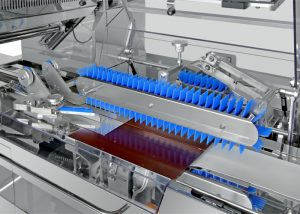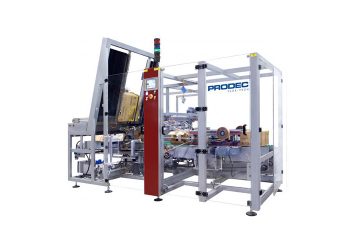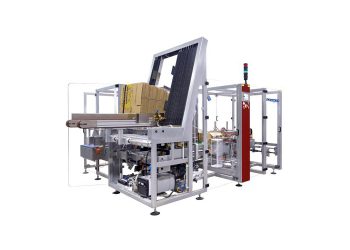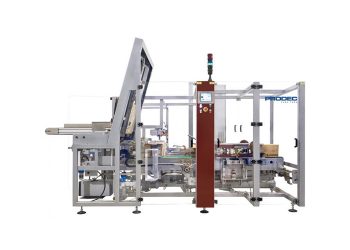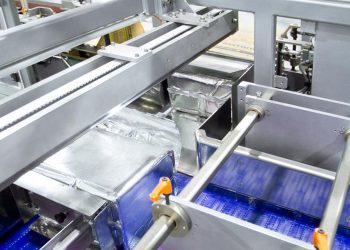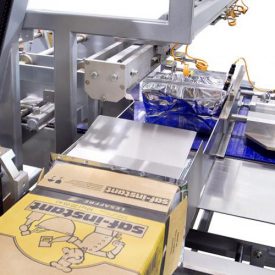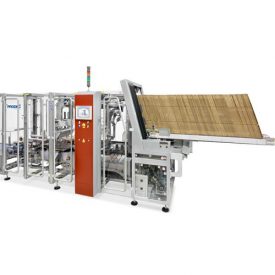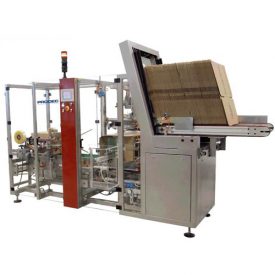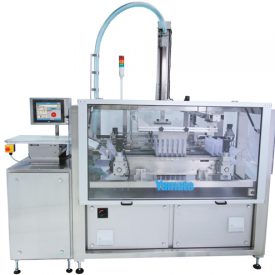- Two loading stations: Forming/Filling and Closing of cases
- Occupies small amount of space
- Rapidly changes the mechanical format and stores them in a PLC.
- No introduction device in the absence of case
- Electrical and mechanical protections as per regulations
- Production designed for average per minute case production
- Valid for RSC case
- Reaches an output of up to 8 cases/minute
CASE MAGAZINE:
Horizontal case store with motor. store length 1000 mm. As the cases are removed from the system, a case presence detector causes the progress of the tape ensuring that the product is always ready for removal. When the store is empty (or there are an insufficient number of cases for smooth operation), the machine is stopped and a visual signal warns the operator of the lack of cases. Optionally you can install an additional detection of the minimum number of cases that must always be present at the store so that the operator can reload before a machine stop.
SHAPE OF CASE:
Removing the unit by folding cartons using suckers installed on a semicircular arm with mechanical movement. Forced opening of the case by a suction cup system and a mechanism for side squaring with presence and formation detection of the case.
INSERTION OF THE CASE:
Combined introducer group using pneumatic pusher, which with the help of a guide of the case flaps installed thereto, ensure transfer process of set of product packs into the case.
SEALING OF CASE:
Shifting the case to the sealing area through mechanically operated carrier
PRODUCTION:
The formation unit and closing of the cases can reach an output of up to 8 cases per minute and as a whole will depend on the product and the group to be prepared.
MAN/MACHINE INTERFACE:
All security or system failure elements, such as accumulation of product on the store conveyor, poorly sealed doors or protections, presence of case, malformed case, lack of air pressure, etc are displayed on a touchscreen built into the control panel for quick location. The touch screen performs the function of man/machine interface, helping to quickly solve any problems which may have occurred in machine because of two utilities: Editing of error messages. Fault location. Being an open system, the staff has access to counters, timers, etc. without the need of specialized personnel, because of the simplicity of its use. The system offers the possibility of giving a complete history of the state of the machine: Number of cycles. Number of cases. Number of case failures. Number of introduction failures. Hours of machine running. All electrical machine command is centralized in a PLC, allowing versatility and speed or system changes.

